
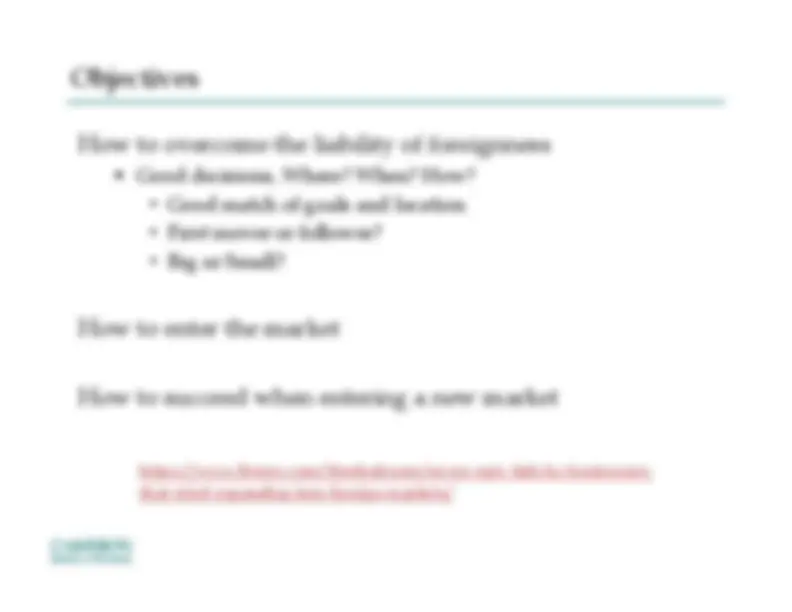
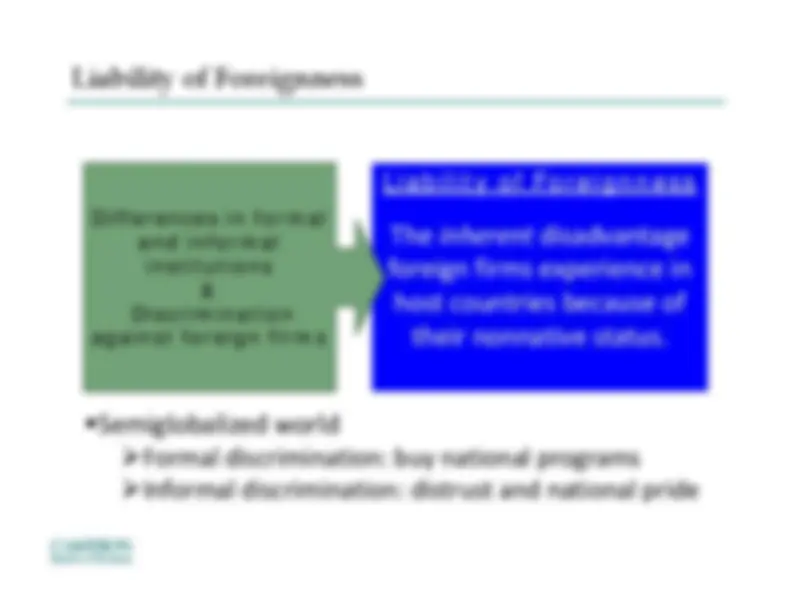
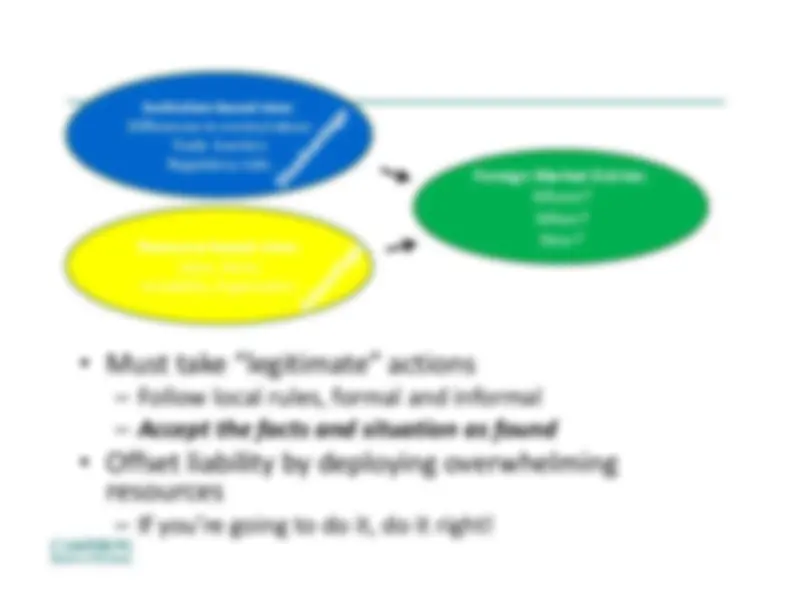
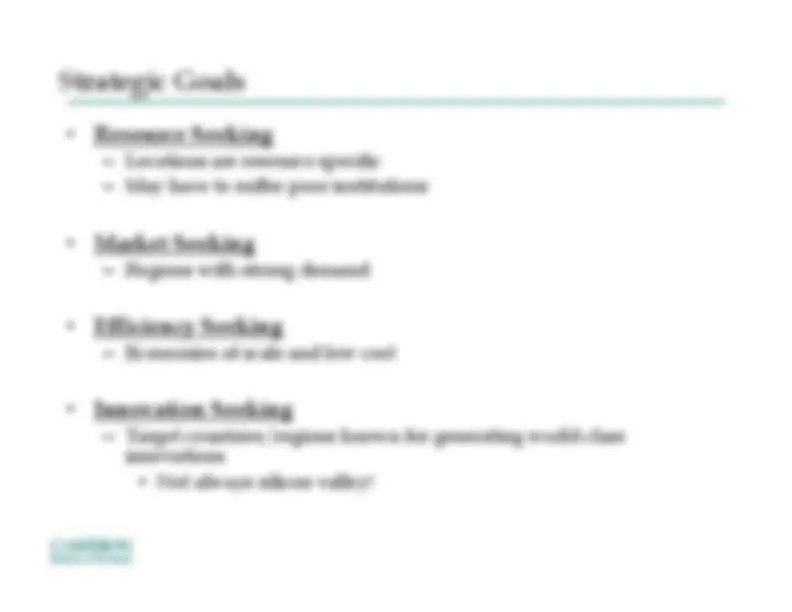

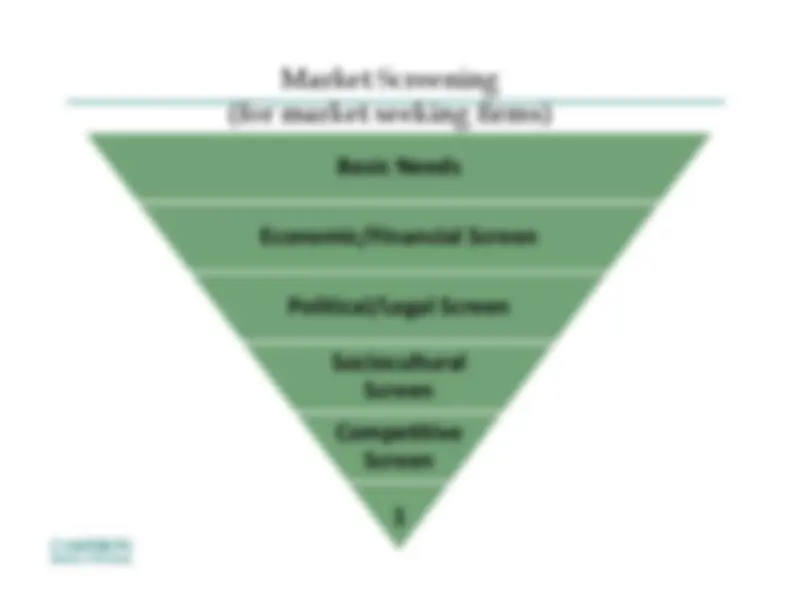
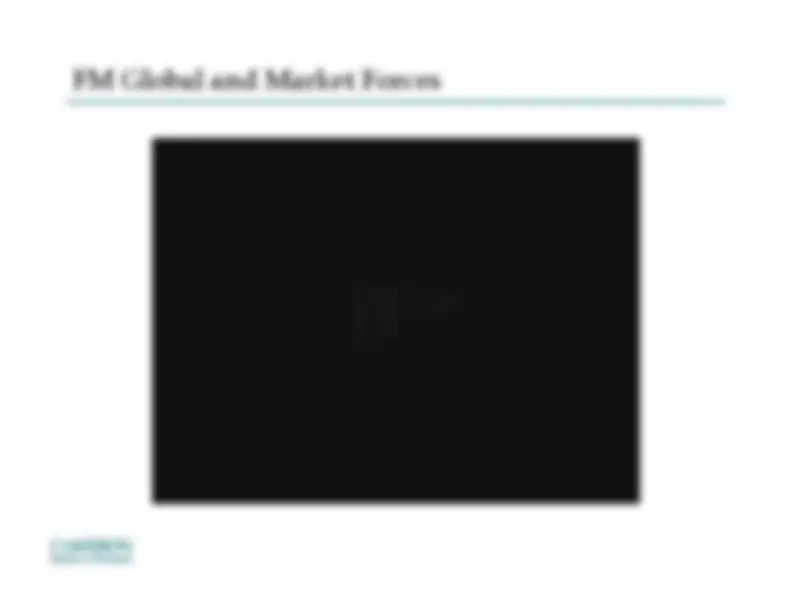
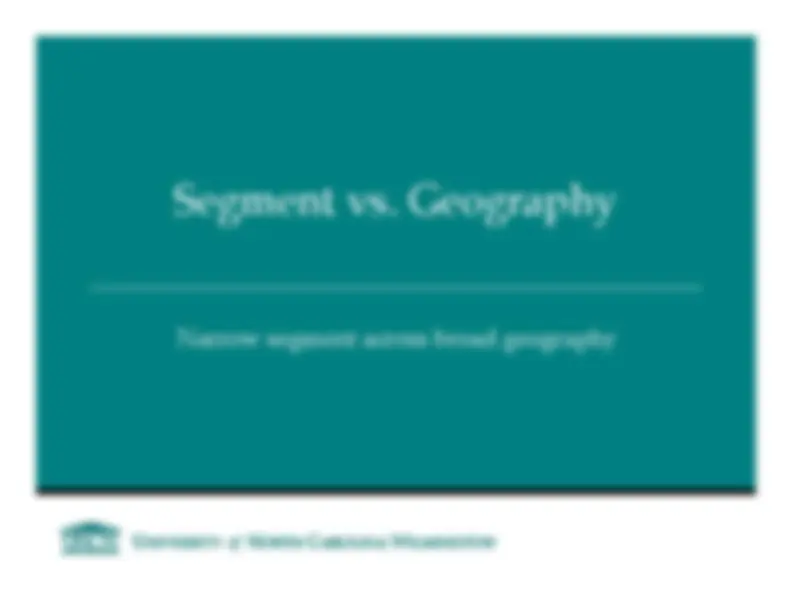
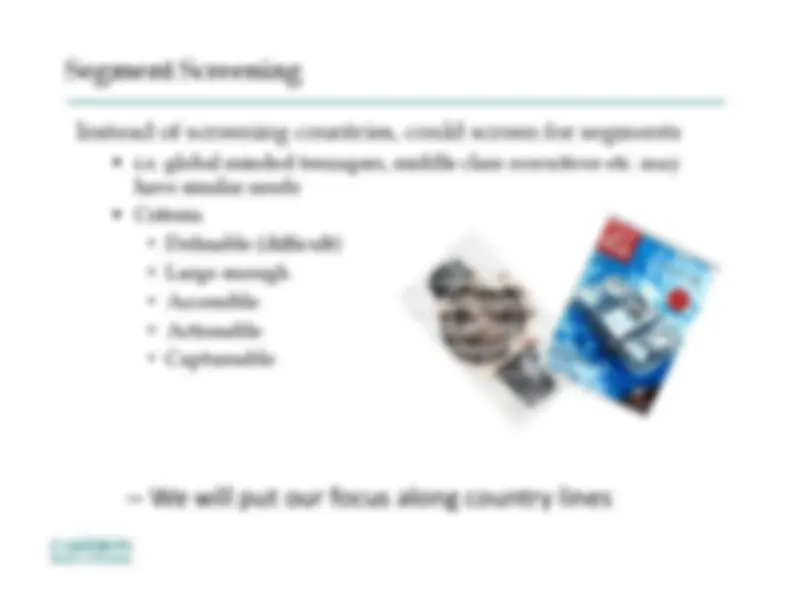

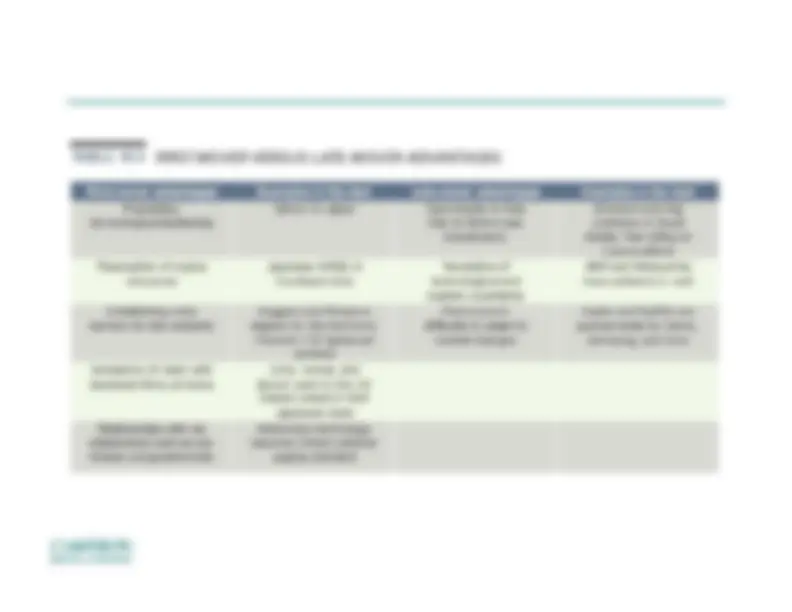

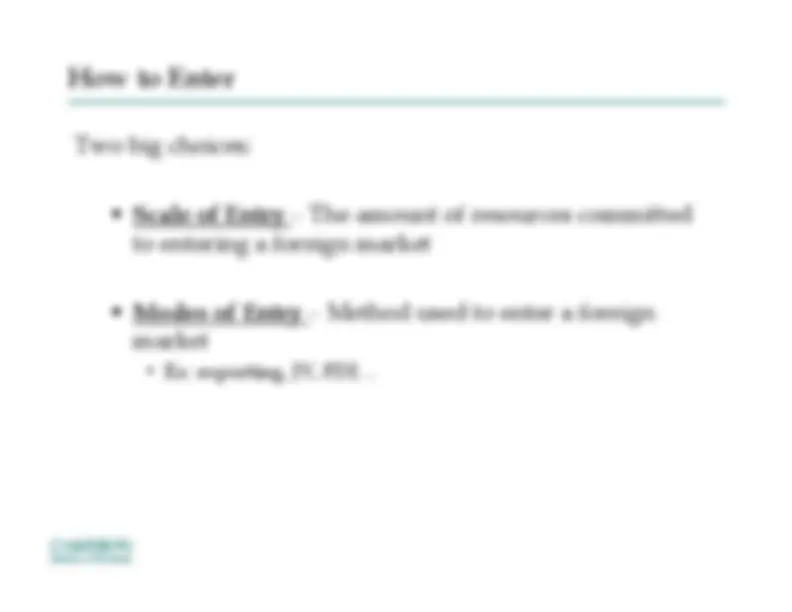
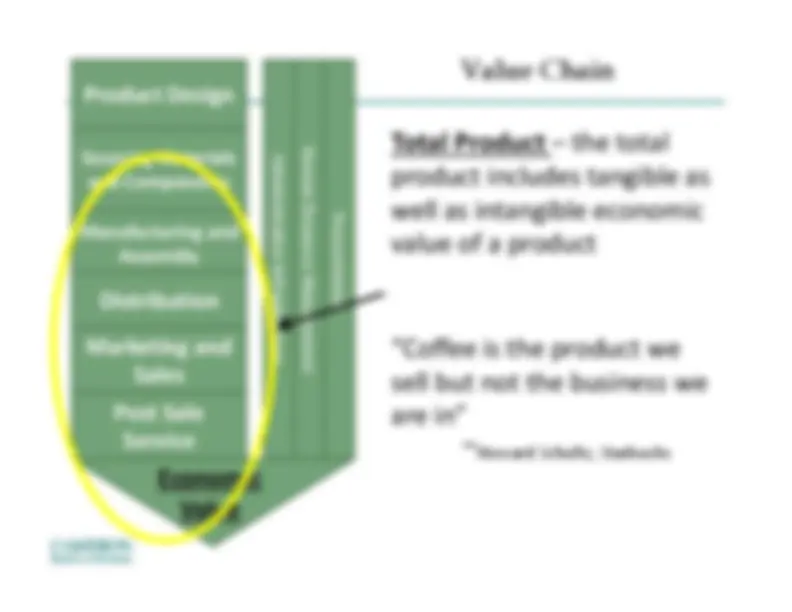
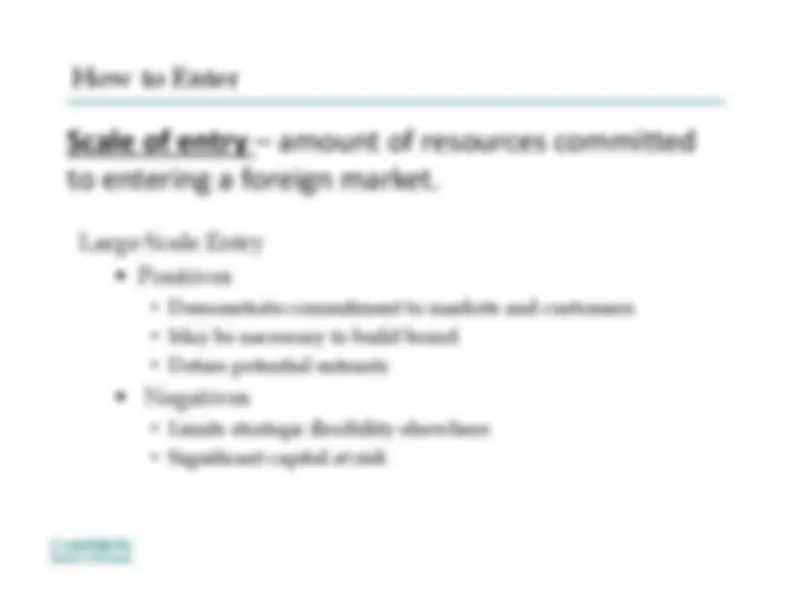
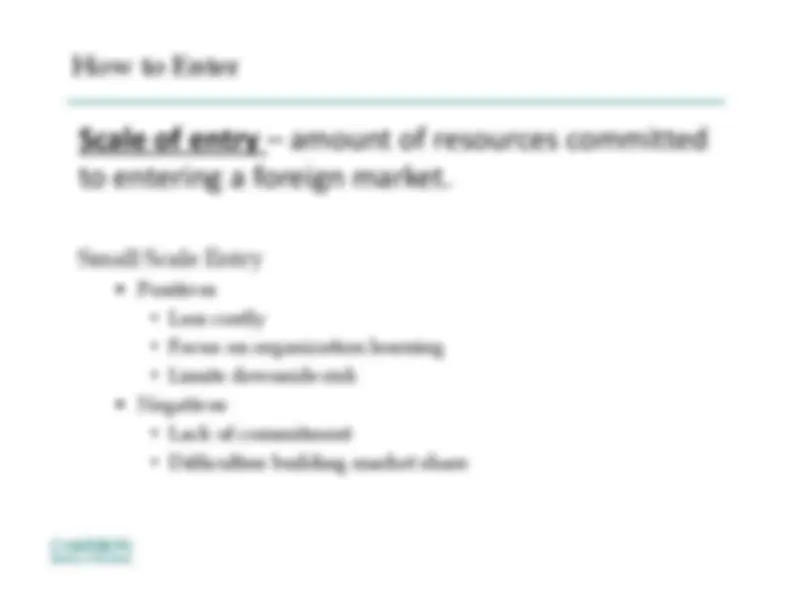
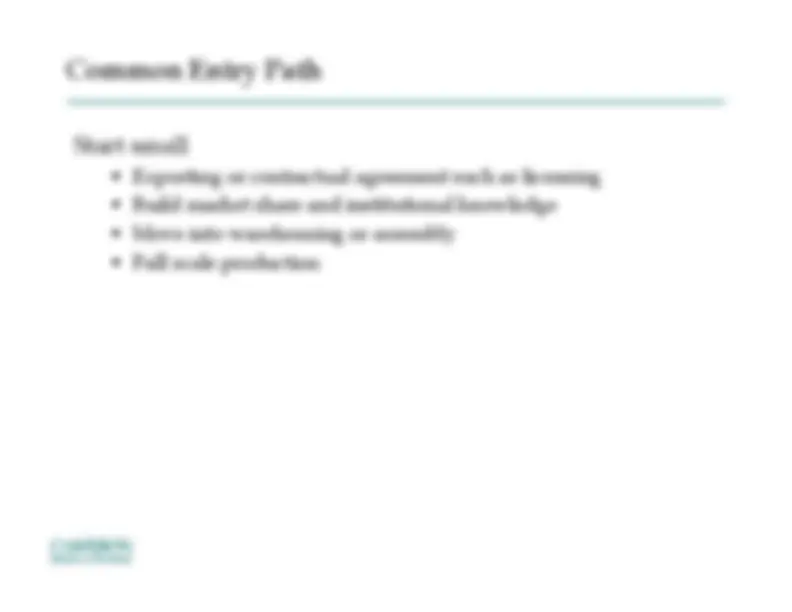
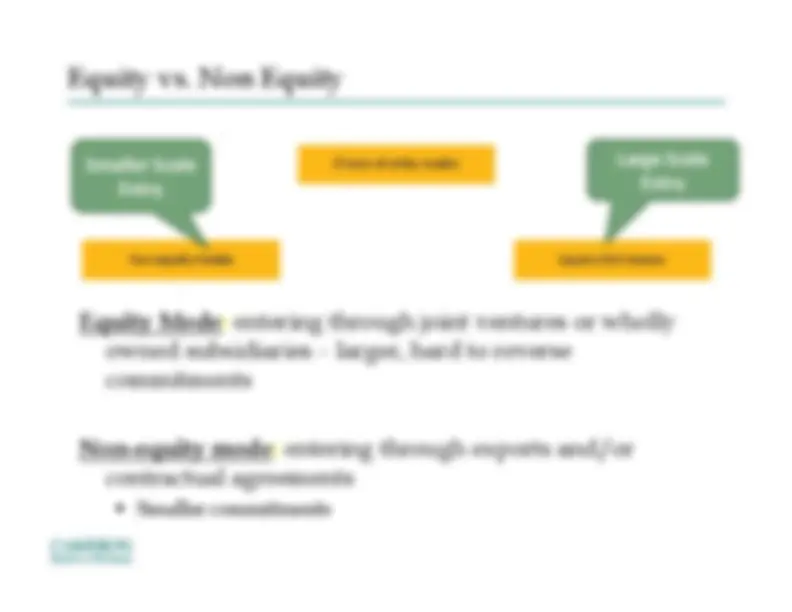
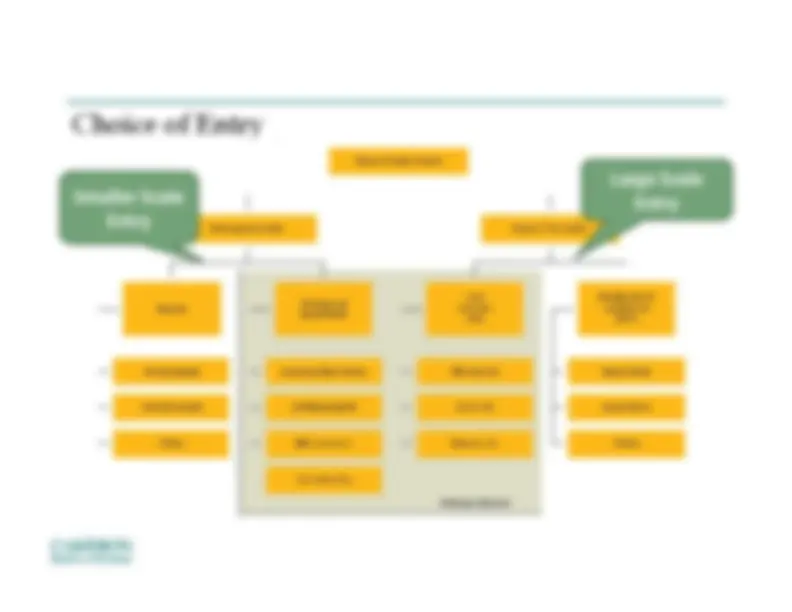
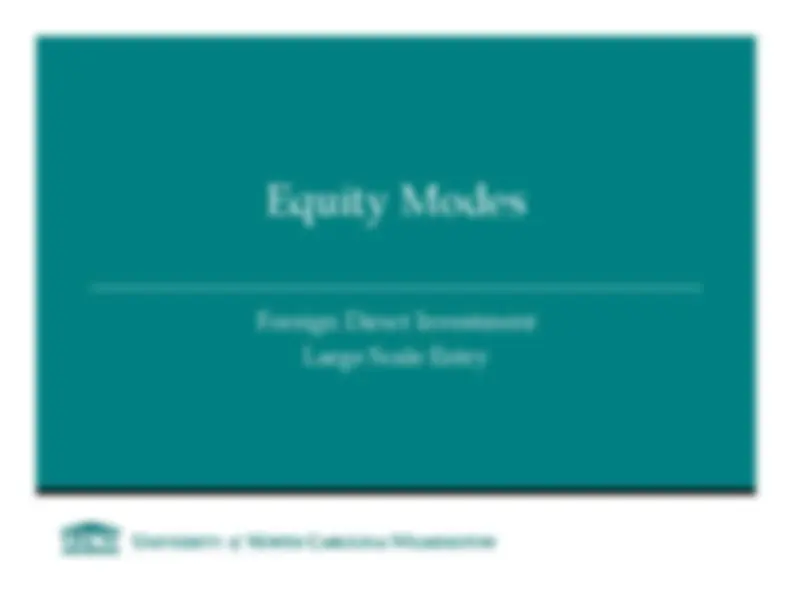
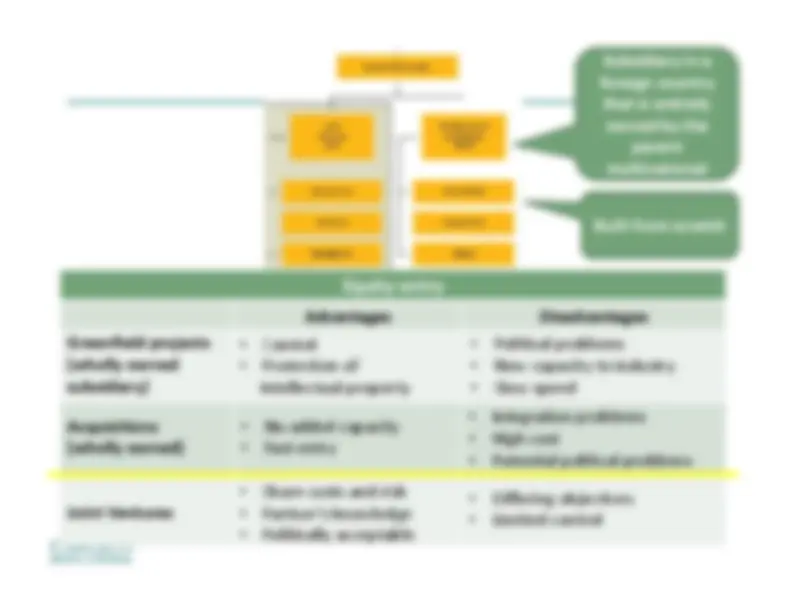
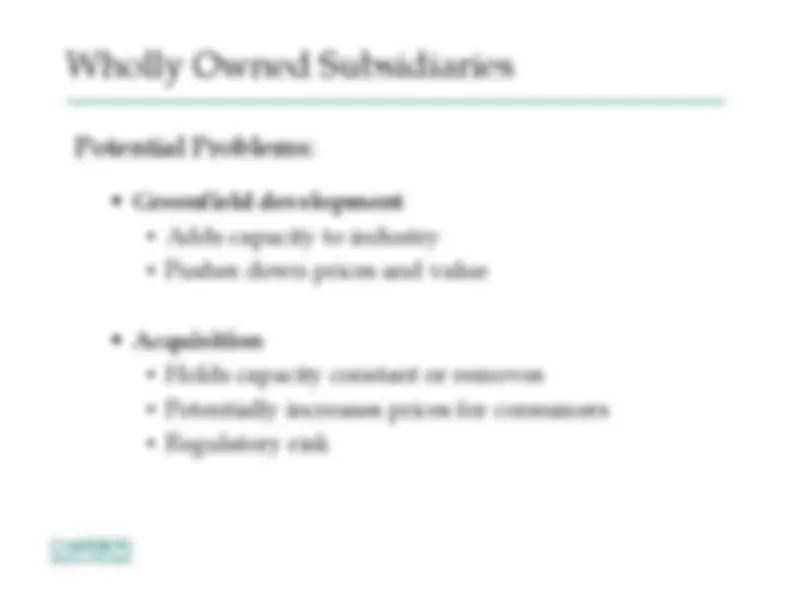
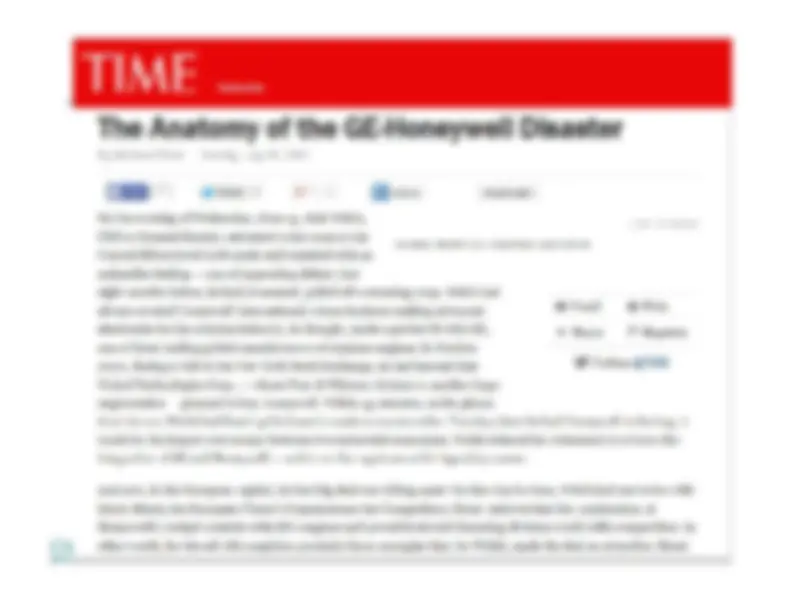
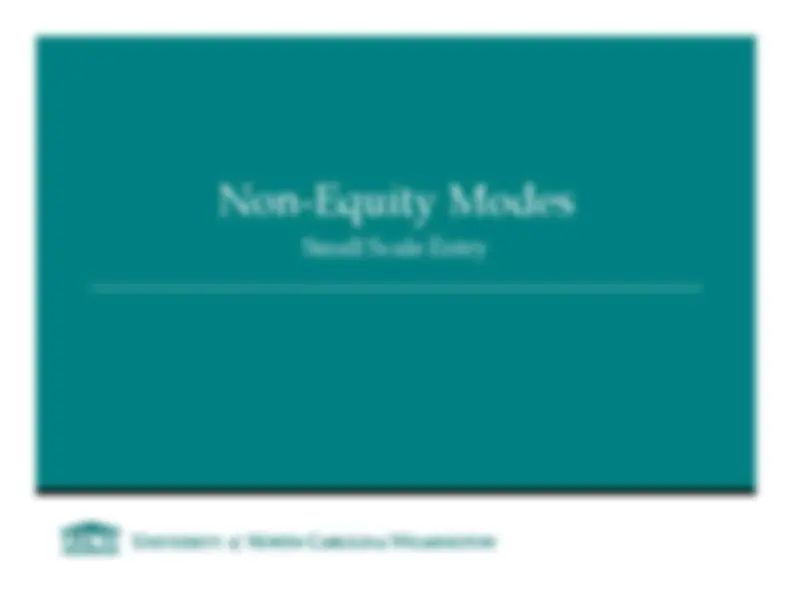
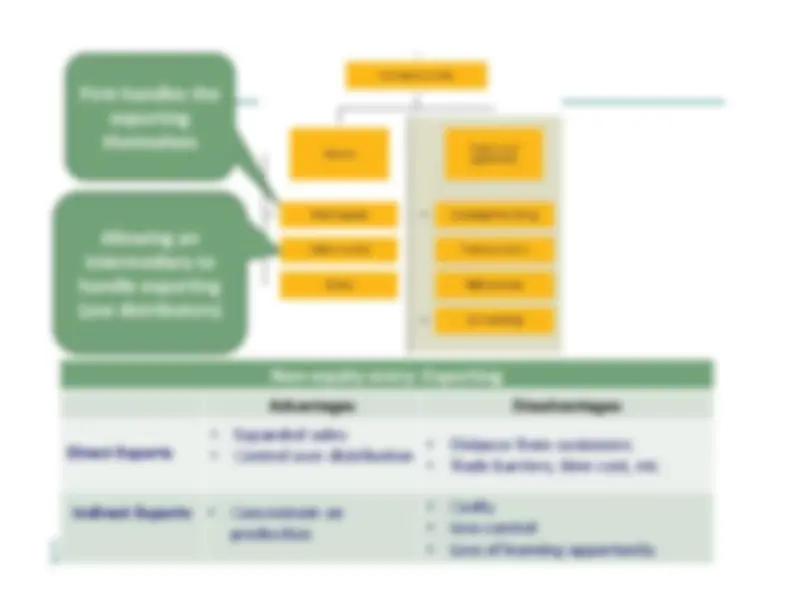
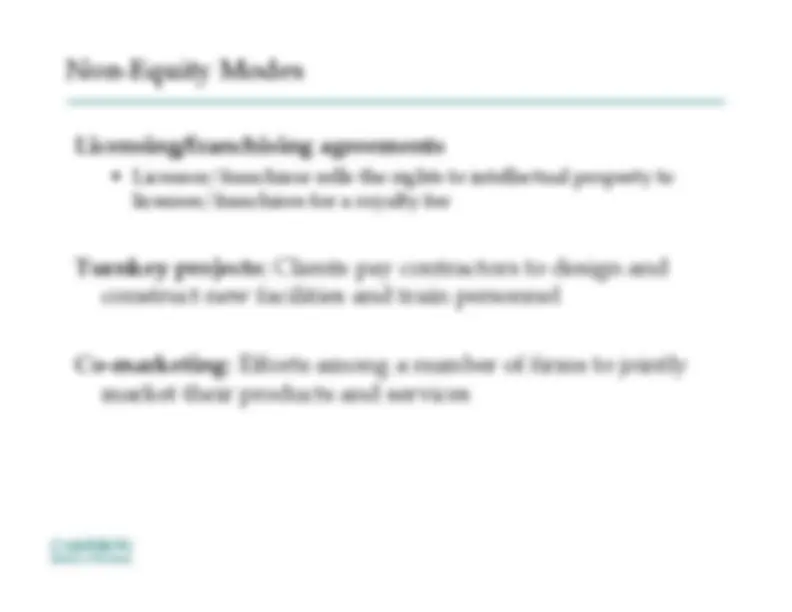

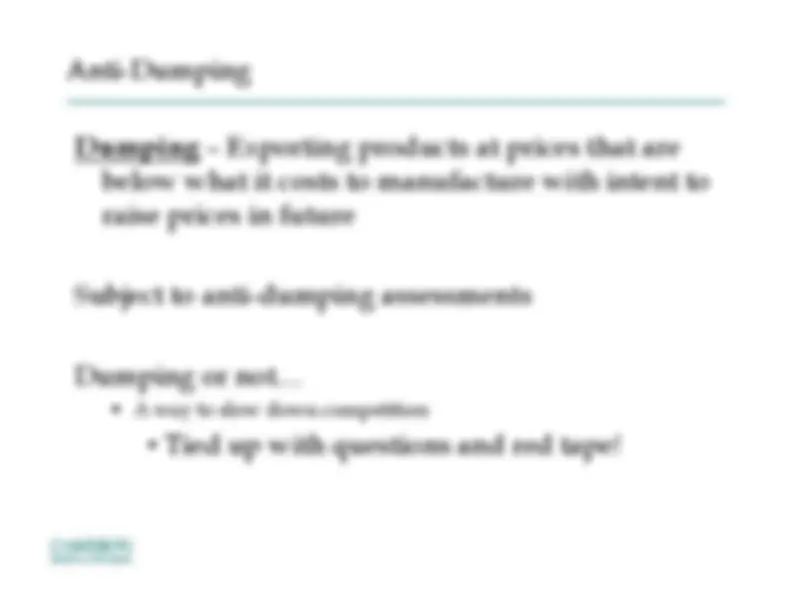

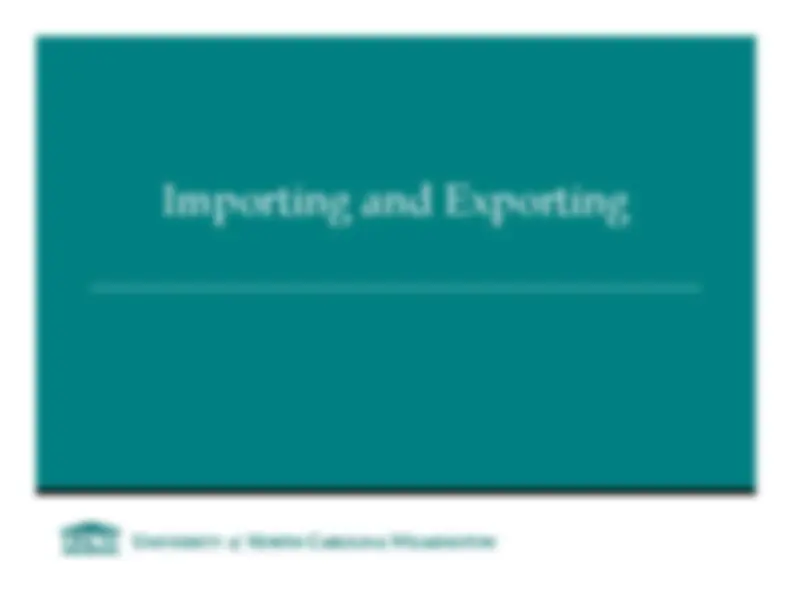
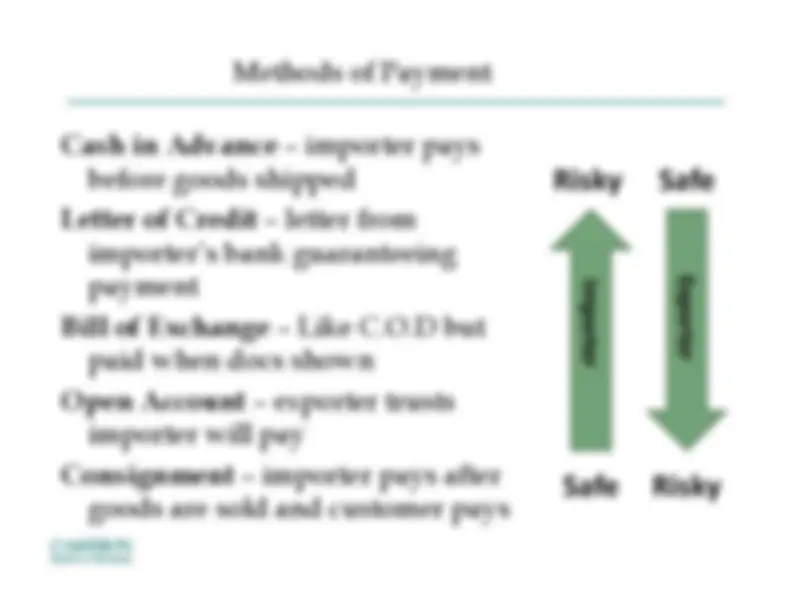
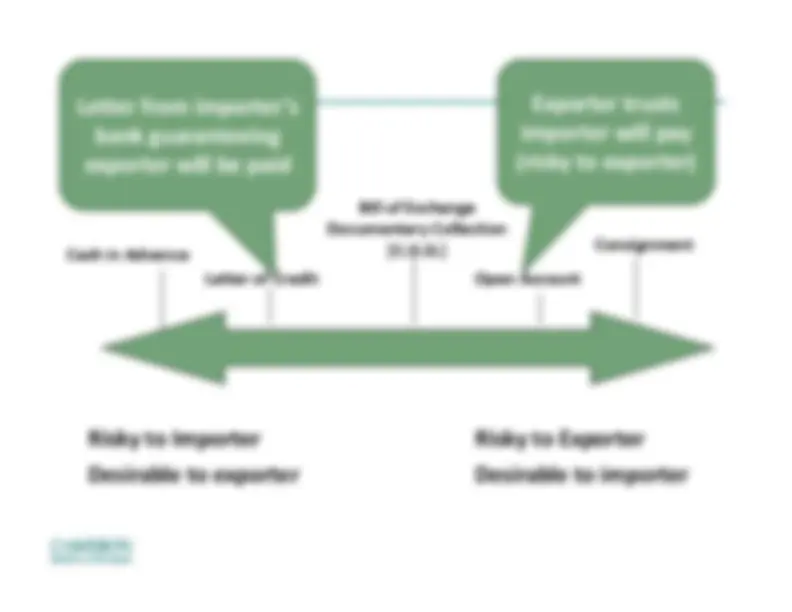
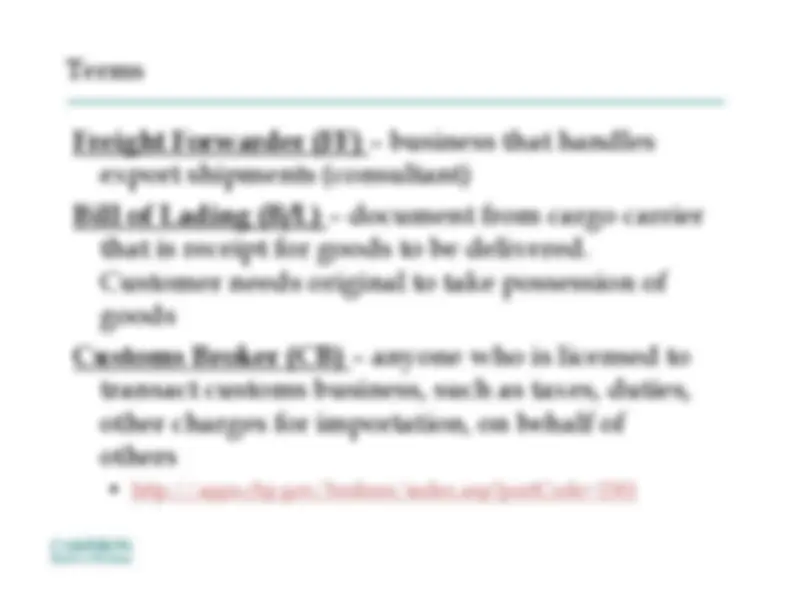
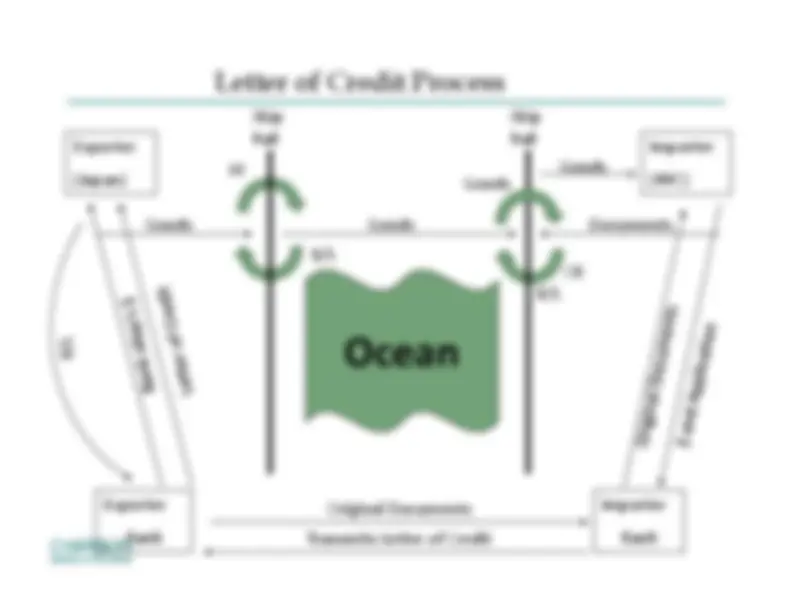

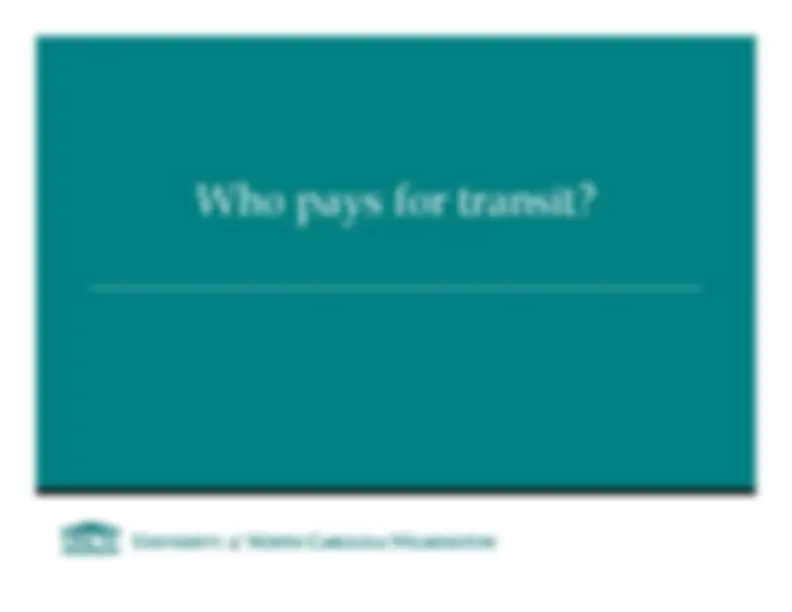
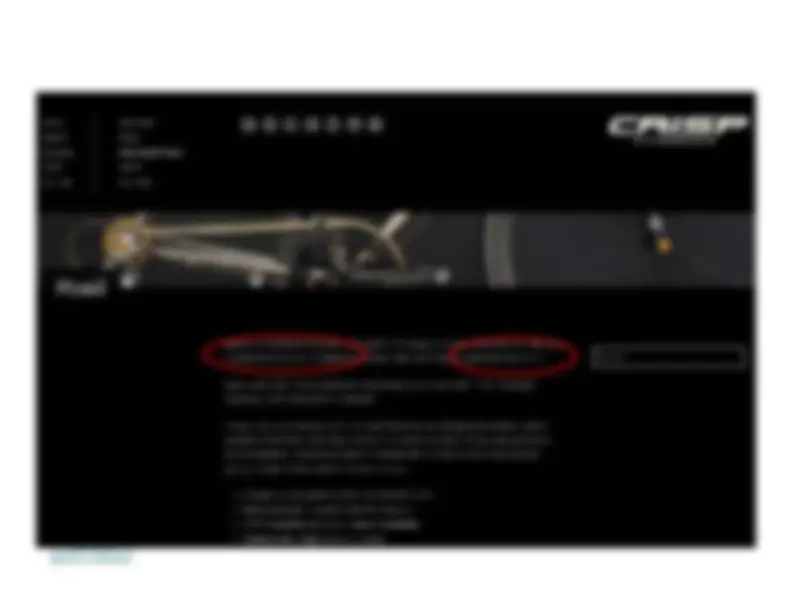
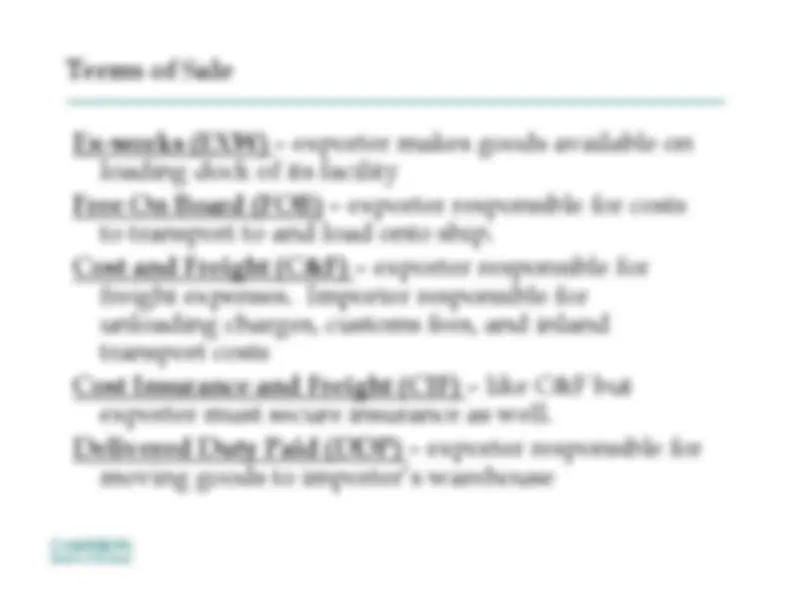
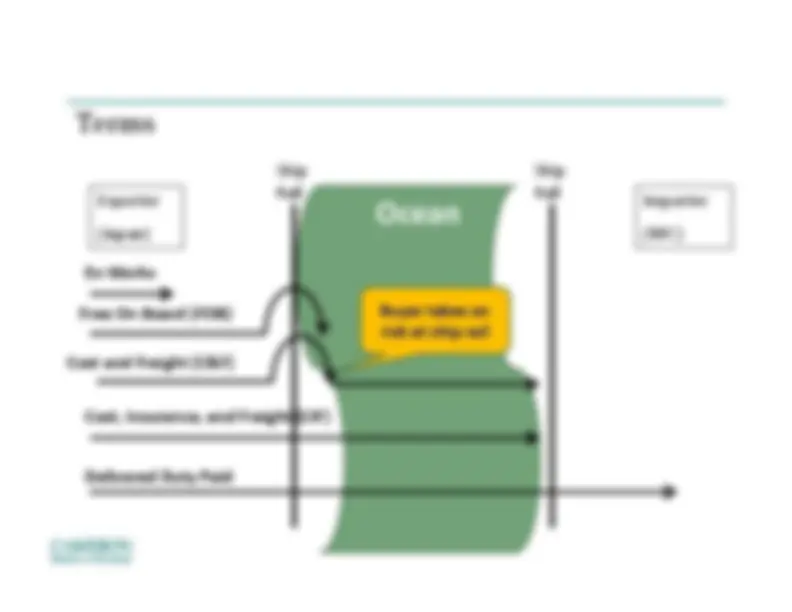
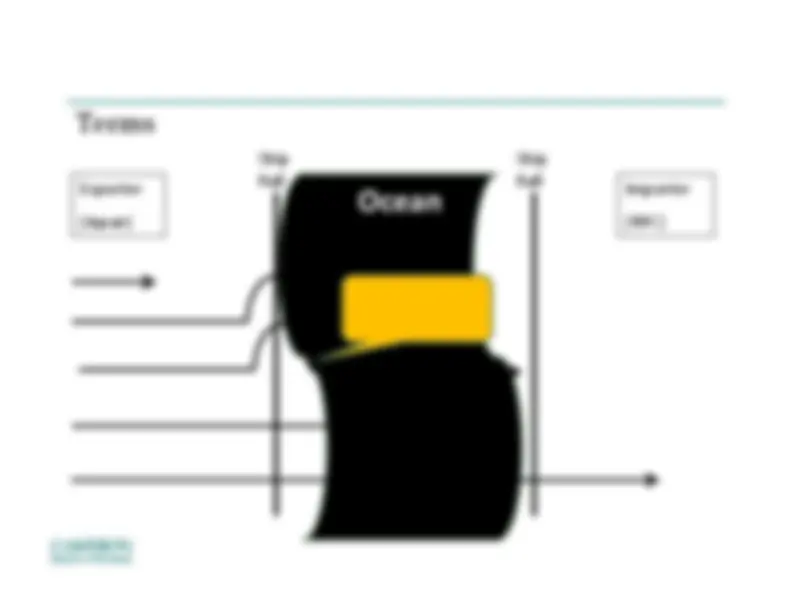
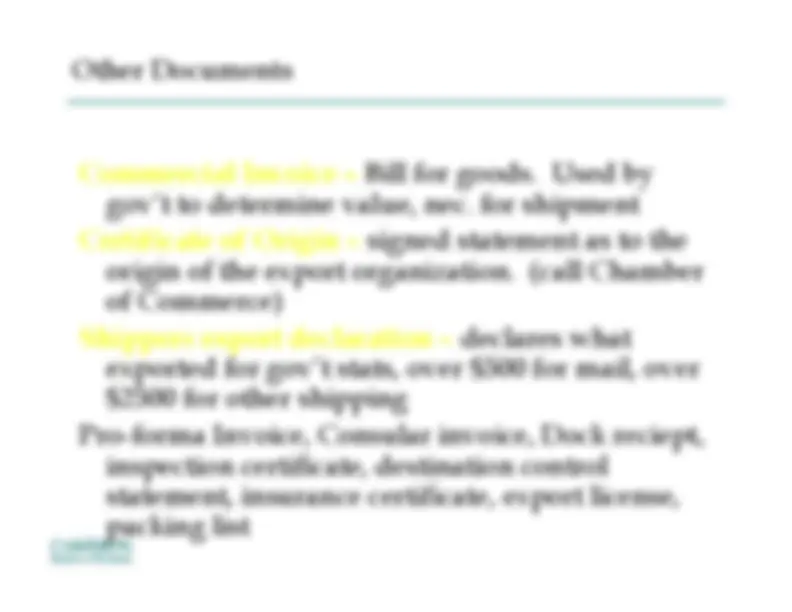
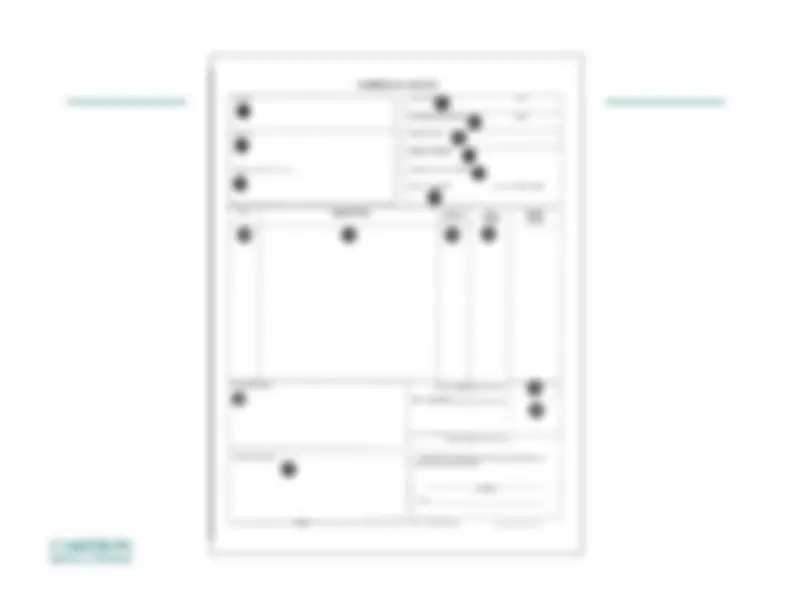
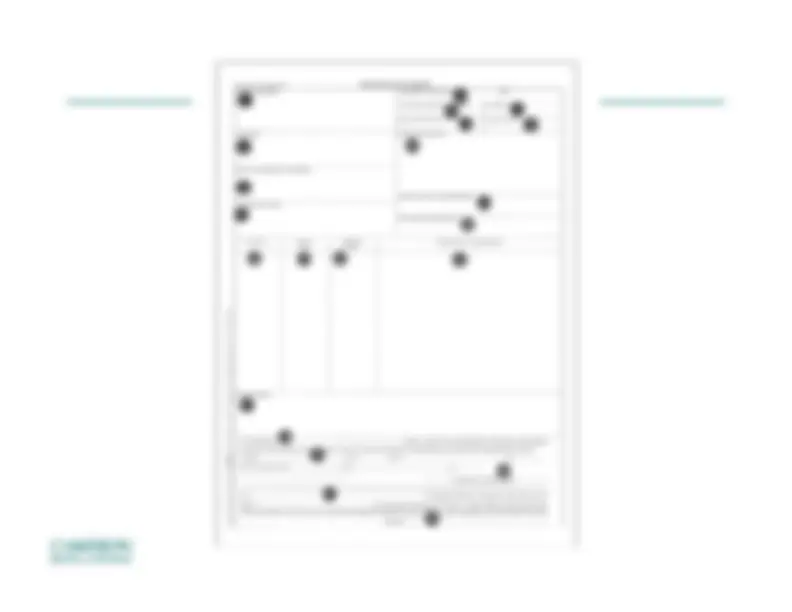

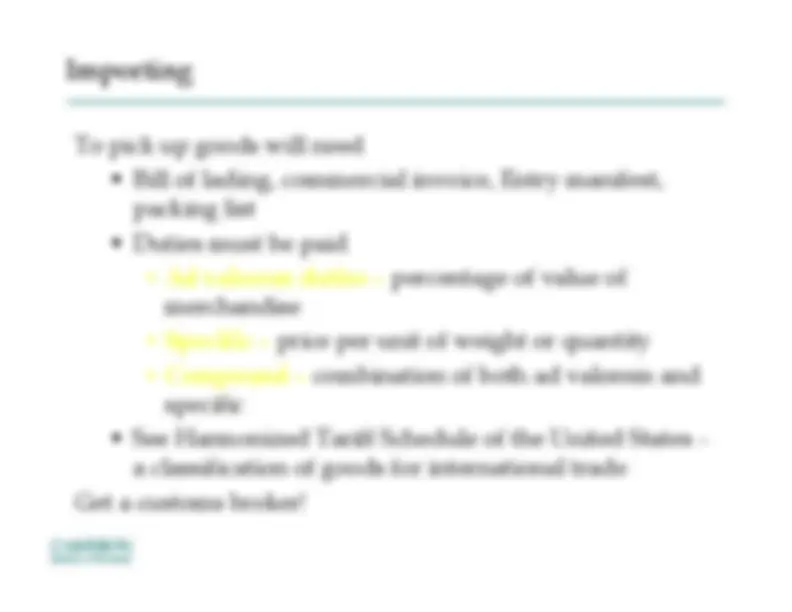
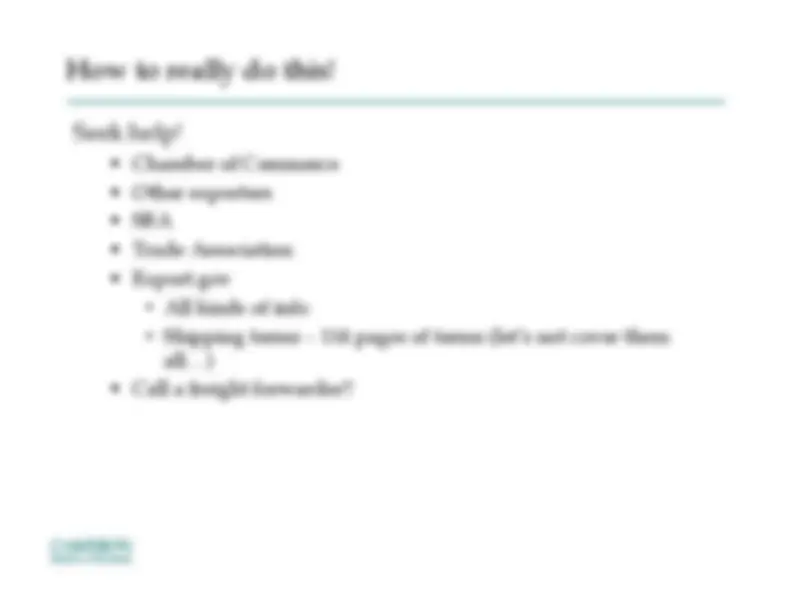

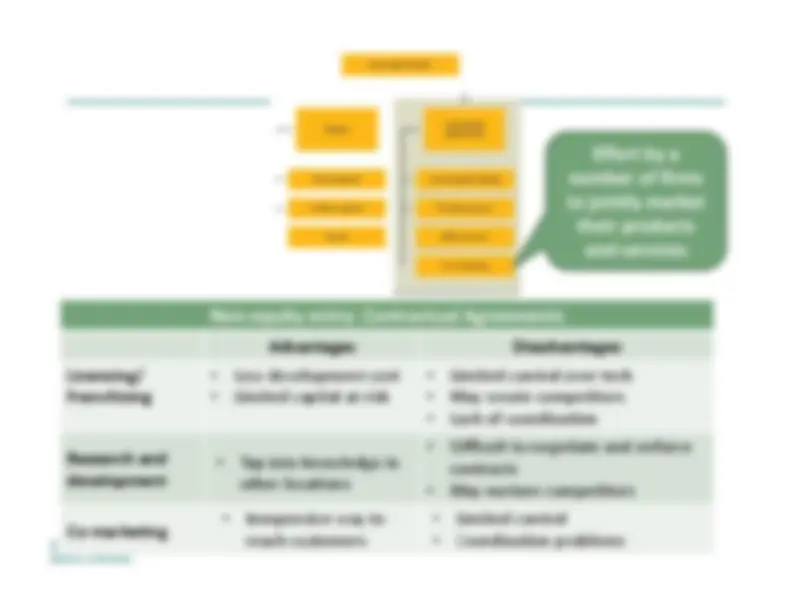
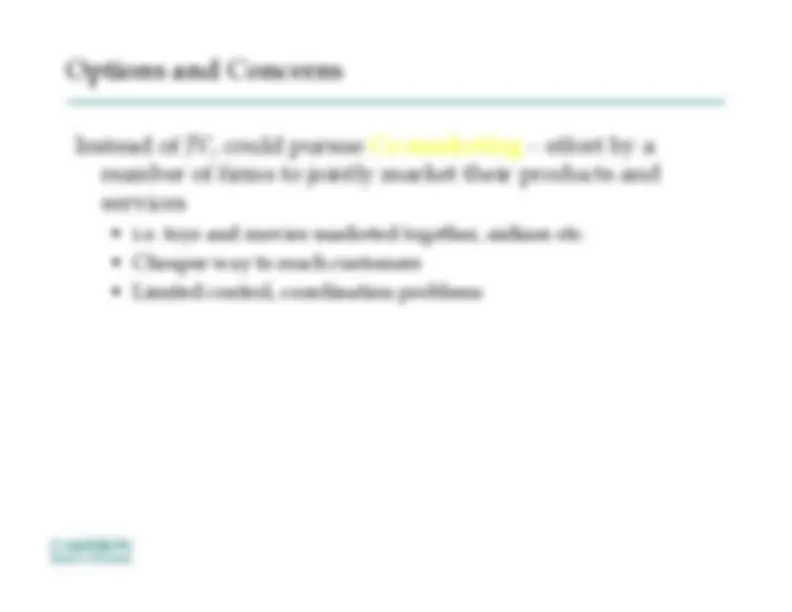
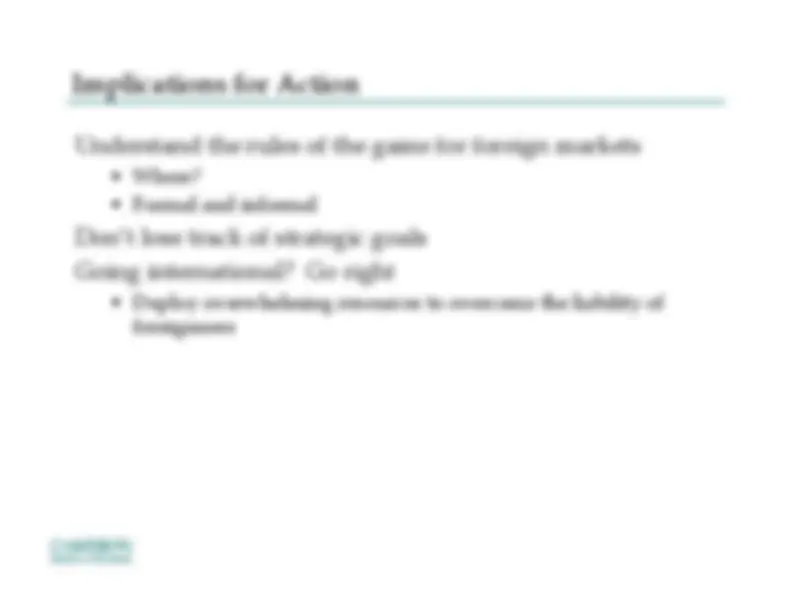


Study with the several resources on Docsity

Earn points by helping other students or get them with a premium plan


Prepare for your exams
Study with the several resources on Docsity

Earn points to download
Earn points by helping other students or get them with a premium plan
Community
Ask the community for help and clear up your study doubts
Discover the best universities in your country according to Docsity users
Free resources
Download our free guides on studying techniques, anxiety management strategies, and thesis advice from Docsity tutors
Insights into the challenges faced by foreign firms in host countries due to their nonnative status, and offers strategies for overcoming the liability of foreignness. Topics include good decisions on market entry, resource-based view, and institution-based view. It also covers the importance of understanding cultural differences and the use of various entry modes.
Typology: Schemes and Mind Maps
1 / 58

This page cannot be seen from the preview
Don't miss anything!



















































India Outsourcing and Market EntriesAs of 2013, Africa accounted for 16 percent of India’s
http://www.ictsd.org/bridges‐news/bridges‐africa/news/india%E2%80%99s‐investment‐in‐africa‐feeding‐up‐an‐ambitious‐elephant
Liability of Foreignness
Liability of Foreignness^ The
inherent
disadvantage
foreign firms experience inhost countries because of
their nonnative status.
Differences in formal
and informalinstitutions
Discrimination against foreign firms Semiglobalized world
Formal discrimination: buy national programs
Informal discrimination: distrust and national pride
Institution‐based view: Differences in norms/values
Trade barriersRegulatory risks
Foreign Market Entries
:
Where?When?How?
Resource‐based view:
Value, Rarity Imitability, Organization
-^
Must take “legitimate” actions^ –
Follow local rules, formal and informal – Accept the facts and situation as found
-^
Offset liability by deploying overwhelmingresources^ –
If you’re going to do it, do it right!
Where?All about
Strategic goals ^
Cultural and institutional differences
Geographic ^
Agglomeration – advantages from clustering^ •
Knowledge spillovers • Industry demand for specific workforce • Industry demand facilitates specific suppliers ^
Advantages unique to each firm
Strategic Goals^ •^
Locations are resource specific – May have to suffer poor institutions
-^
Regions with strong demand
-^
Economies of scale and low cost
-^
Target countries/regions known for generating world-classinnovations
-^ Not always silicon valley!
Basic Needs
Economic/Financial Screen
Political/Legal Screen
Sociocultural
Screen Competitive
Screen
1
Market Screening
(for market seeking firms)
Additional Considerations
FM Global and Market Forces
Strategic ObjectivesObjectives not exclusive
Weigh multiple objectives